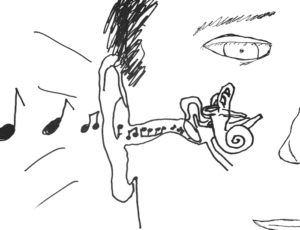How to Improve Your Timing With A Metronome
Do you struggle with playing in time? If so, take heart. You’re not the only one.
In this lesson I’ll show you how to use a metronome to play better in time. We’ll focus on steady timing, and then in a later lesson I’ll show you how to use a metronome to speed things up.
This is part of a mini-course called How To Play In Time.
5 Steps of Metronome Practice 🔁
1. Learn things without the metronome
2. Practice timing without your fiddle
3. Start with single notes, then add complexity
4. Alternate between listening and playing
5. Record yourself playing to a metronome
What is a metronome?
It’s an external beat source. You can change the tempo or speed of the metronome. I use an app called Pro Metronome.
You can also use play-along apps like Strum-Machine. If you’re practicing a scale or technique, then just set it to repeat on a single chord, then adjust the tempo.
Think of a metronome as a new instrument to learn. So it’s important to start with very simple things (just like you did when you first started playing the fiddle).
A lot of people try using the metronome, find it difficult and then give up. Then they tell me, “I hate metronomes!” They get frustrated because they didn’t treat the metronome as an instrument. They didn’t start with simple things.
OK! But now you’re wondering “How do I practice with a metronome?”
5 Steps Of Metronome Practice

Now let’s go into more detail…
1. Learn things without the metronome
Don’t use a metronome when you first learn a tune or technique.
Learn things in free time. This gives your hands, arms, ears and brain a chance to figure it out. If you’re trying to work out a technical problem, such as how to finger AL1-D3, then it will be extremely frustrating if you do this with the metronome going. Slowly work on new challenges without a metronome, until you can do it. Then practice with a metronome to tighten up the timing.
2. Practice timing without your fiddle
You can practice timing without your fiddle. This is a focused way to improve your sense of timing because you don’t have to worry about the technical challenge of playing the fiddle.
Listen and Feel the beat before you play. Make it loud so you feel it in your body
Clap with the beat. This unifies body and mind
Get in the groove. Practice singing phrases with a metronome or rhythm trainer.
If you have a metronome on your phone, you can do this anywhere, any time.
In general, practicing without your fiddle is a powerful strategy for:
- Ear-training
- Learning new tunes
- Recalling and reviewing tunes you’ve forgotten
3. Start with single notes, then add complexity

This is probably the most important idea in this lesson. When you first learn an instrument, you don’t start with a complex piece. You start with a single note. In the same way, when you first practice with a metronome, you practice simple things on a single note.
Start with single notes and then practice progressively more complex things (intervals, scales, phrases, tunes). I call this the STEP™ process: Simple To Elaborate Progression.
Let’s start with single notes at a medium tempo: 60
Vary note lengths: eighths, sixteenths, half notes.
Practice simple rhythms on single notes: hoedown, tucka, triplets.
Extend to more complex things: intervals, string crossing, scales, tune phrases, whole tunes.
If at any point in this progression it becomes too challenging, then return to simpler steps. For example, if you try to practice the second quarter of Arkansas traveler with the metronome but can’t stay with it, then just return to the first four notes of that phrase. And if that’s too hard, then return to the D major scale. Keep moving forwards and backwards along this progression of simple to complex.
4. Alternate between listening and playing

Play a phrase with a metronome, then just listen for a cycle.
This is something all metronome beginners should do. I notice that a lot of times when people practice with a metronome, it’s totally out of sync with what they’re playing.
The listening cycle allows the mind to reconnect with the beat
You can also do this practice with a play-along track, which is a bit easier than using a metronome.
Here’s a more general lesson on this practice: Alternate between listening and playing
5. Record yourself playing to a metronome
A lot of times, students play a tune with a metronome but are totally out of sync with it. They can’t tell they are off because they are so focused on the tune.
If you record yourself playing with it, then you’ll be able to honestly evaluate your performance. Like anything else, you can improve this with practice. You can practice anything.
How To Improve Your Fiddling Through Recording
If you take this ground-up approach, then you’ll see huge improvements in your timing.
Keep this in mind: Metronome practice can be fun. If you get into it, you’ll feel a sense of balance between your brain and body.
Return To Top Of How To Play In Time Course >>
Leave a Reply
You must be logged in to post a comment.

Hi Jason,
Do you have a triplet metronome?
Thanks, Deb
use 6/8 time if your MM can’t do it….
Good stuff, Jason.
I have previously attempted to play along with a metronome and after a short time became frustrated and stopped.
Your explanation and plan make much sense to me, and I will be incorporating your ideas and exercises into my practice routine.
Many thanks.
Thomas H.